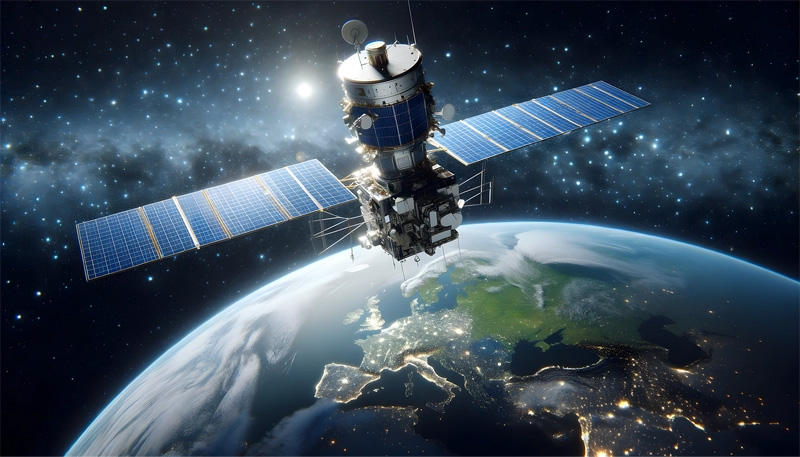Japan successfully generates electricity in space, marking a historic milestone that could redefine how the world produces and consumes clean energy. In a world-first achievement, Japanese scientists have wirelessly transmitted energy collected in space back to Earth, moving the dream of space-based solar power closer to reality.
The breakthrough, spearheaded by the Japan Aerospace Exploration Agency (JAXA) and leading Japanese corporations, positions Japan as a global frontrunner in renewable energy innovation. After decades of research and trials, Japan successfully demonstrated that electricity harvested from space-based solar panels can be beamed safely and efficiently to terrestrial receivers.
As nations race to reduce carbon emissions and secure sustainable energy sources, Japan’s success could unlock an entirely new era of clean, limitless power from orbit.
How Japan Successfully Generated Electricity in Space
The landmark demonstration took place in May 2025. Engineers launched a solar power satellite (SPS) into low Earth orbit, approximately 400 kilometers above the planet’s surface. Equipped with advanced photovoltaic panels and microwave transmission systems, the satellite collected solar energy — unfiltered by Earth’s atmosphere — and converted it into microwaves.
These microwaves were precisely beamed to a rectenna (rectifying antenna) on Earth, located 55 kilometers away from the project’s control station. The ground receiver converted the microwaves back into usable electricity, achieving:
-
2 kilowatts (kW) of power successfully transmitted
-
High beam accuracy minimizing energy loss
-
Safe transmission levels, lower than common mobile phone signals
According to Dr. Masaki Tanaka, JAXA’s project director, “This is a pivotal moment. Japan successfully generates electricity in space and demonstrates that safe, efficient wireless power transmission is possible. With further advancements, space-based solar power can play a central role in Japan’s clean energy future.”
Why Japan’s Space Energy Success Is a Game Changer
1. 24/7 Uninterrupted Energy
Unlike terrestrial solar panels, space-based systems collect solar energy 24 hours a day. Without atmospheric interference, cloud cover, or night-time interruptions, SSP provides continuous, reliable power.
2. Zero-Emission Renewable Energy
Japan successfully generates electricity in space using solar panels that emit no greenhouse gases. This technology can drastically cut carbon emissions, helping Japan and other nations meet net-zero targets.
3. Energy Security for Japan
With over 90% of its energy currently imported, Japan’s breakthrough paves the way for energy independence. SSP could reduce reliance on fossil fuel imports and insulate Japan from global energy price fluctuations.
4. Powering Remote and Developing Regions
In the future, wireless energy transmission could supply clean power to remote areas and developing countries, improving global energy access.
Japan’s Space Solar Power (SSP) Roadmap
Japan’s long-term SSP strategy is ambitious but clear. Following this successful demonstration, JAXA and its partners have outlined key milestones:
-
2028: Launch a larger SPS capable of transmitting 100 kW to Earth
-
2035: Deploy a commercial-scale satellite delivering 1 MW of power
-
2050: Establish orbital solar farms transmitting gigawatts of clean energy to Japan and beyond
Japanese tech giants such as Mitsubishi Heavy Industries, Sharp Corporation, and several leading universities are collaborating on the roadmap’s next phases.
The Global Space Solar Power Race
While Japan successfully generates electricity in space first, other countries are investing heavily:
-
China: Plans to build a space solar power station by 2035 and has conducted ground-based tests
-
USA (NASA): Funding SSP feasibility studies and wireless power research
-
European Union (ESA): Exploring SSP as part of its Net Zero energy goals
Japan’s first-mover advantage could allow it to become a clean energy exporter, transmitting power wirelessly to partner nations in the coming decades.
Challenges Japan Faces in Scaling SSP
Though the demonstration is groundbreaking, scaling space-based solar power commercially presents obstacles:
-
Launch Costs: Deploying massive satellite arrays economically will require advancements in heavy-lift rockets and in-space assembly
-
Transmission Efficiency: Engineers aim to increase power transfer efficiency to commercially viable levels
-
Safety and Regulation: International guidelines will be needed to ensure safe microwave transmissions and avoid interference with aircraft, wildlife, or communications
-
Space Debris: Protecting space infrastructure from debris collisions is critical
Expert Insights on Japan’s Achievement
According to Prof. Hiroshi Matsumoto, SSP pioneer at Kyoto University, “For over four decades, Japan has led SSP research. Japan successfully generates electricity in space is proof that the impossible is now inevitable.”
International energy analyst Laura Chen adds, “Japan’s success is not just national pride — it opens a future where countries beam energy globally, unlocking an entirely new clean energy economy.”
Government Support and Future Funding
Recognizing SSP’s strategic importance, Japan’s Ministry of Economy, Trade and Industry (METI) is increasing investment in space solar power. Recent amendments to Japan’s Basic Space Law also pave the way for private sector participation and commercialization.
The next test, slated for late 2026, will aim to transmit 10 kW over 100 kilometers, a tenfold increase from the May 2025 success.
FAQs About Japan’s Space Solar Power
Is the energy transmission safe for people and animals?
Yes. Microwave energy used is of low intensity and is carefully directed. Studies show exposure levels are lower than mobile phone radiation.
When will space-based solar power become available commercially?
JAXA targets 2035–2040 for commercial SPS satellites delivering MW-scale energy.
Will SSP energy be affordable?
Initial costs are high, but as launch technology and infrastructure scale, analysts predict SSP could be competitive with terrestrial renewables by 2045.
Conclusion: Japan Successfully Generates Electricity in Space — Ushering a New Energy Era
Japan successfully generates electricity in space, achieving a world-first that could transform how humanity powers itself. From combating climate change to ensuring energy security and democratizing global energy access, space-based solar power could soon shift from experimental breakthrough to everyday reality.
As Japan accelerates toward commercial deployment, this achievement marks not just a national triumph, but a milestone for the entire planet’s sustainable energy future.
YAllA TV – www.yallatv.ae





